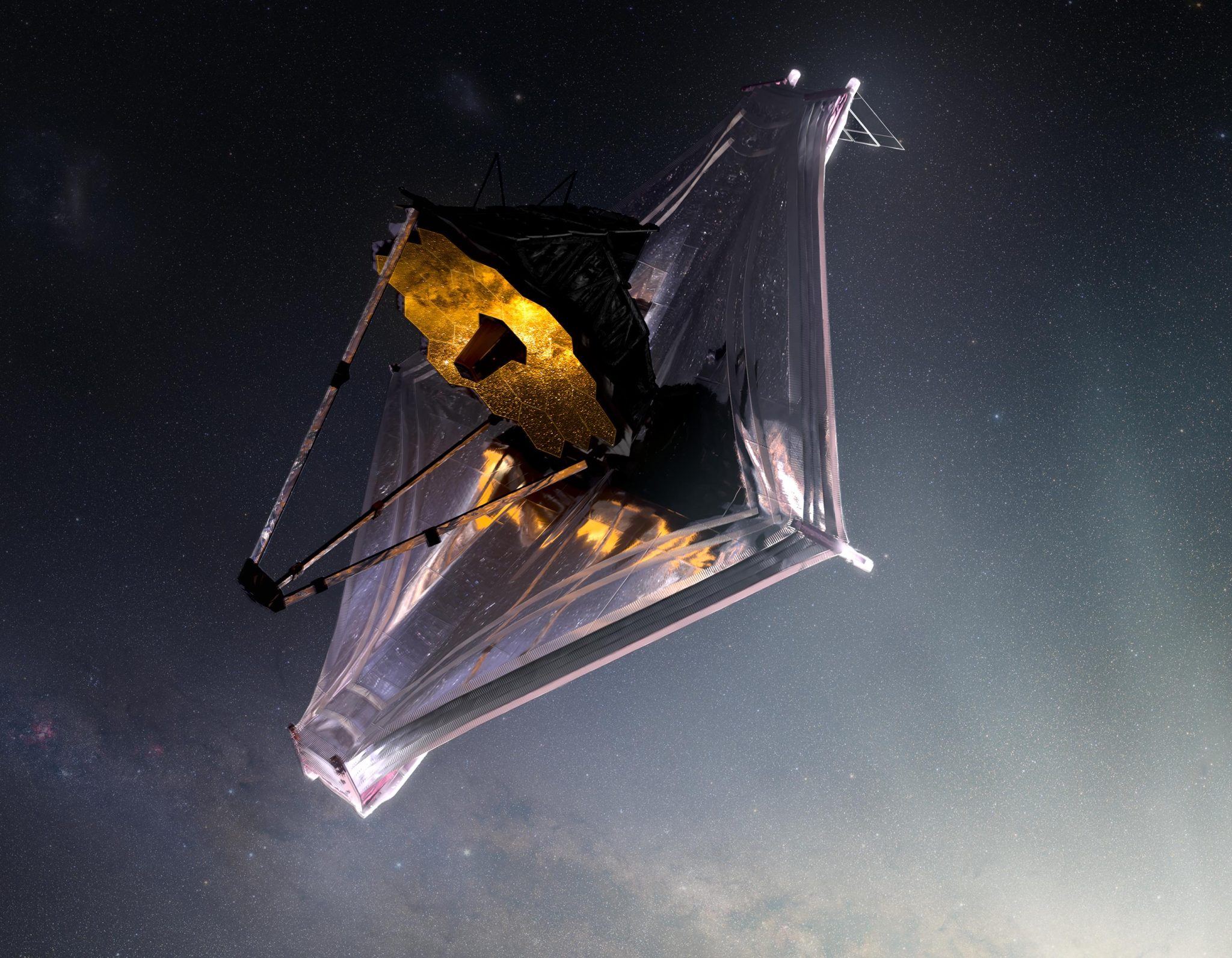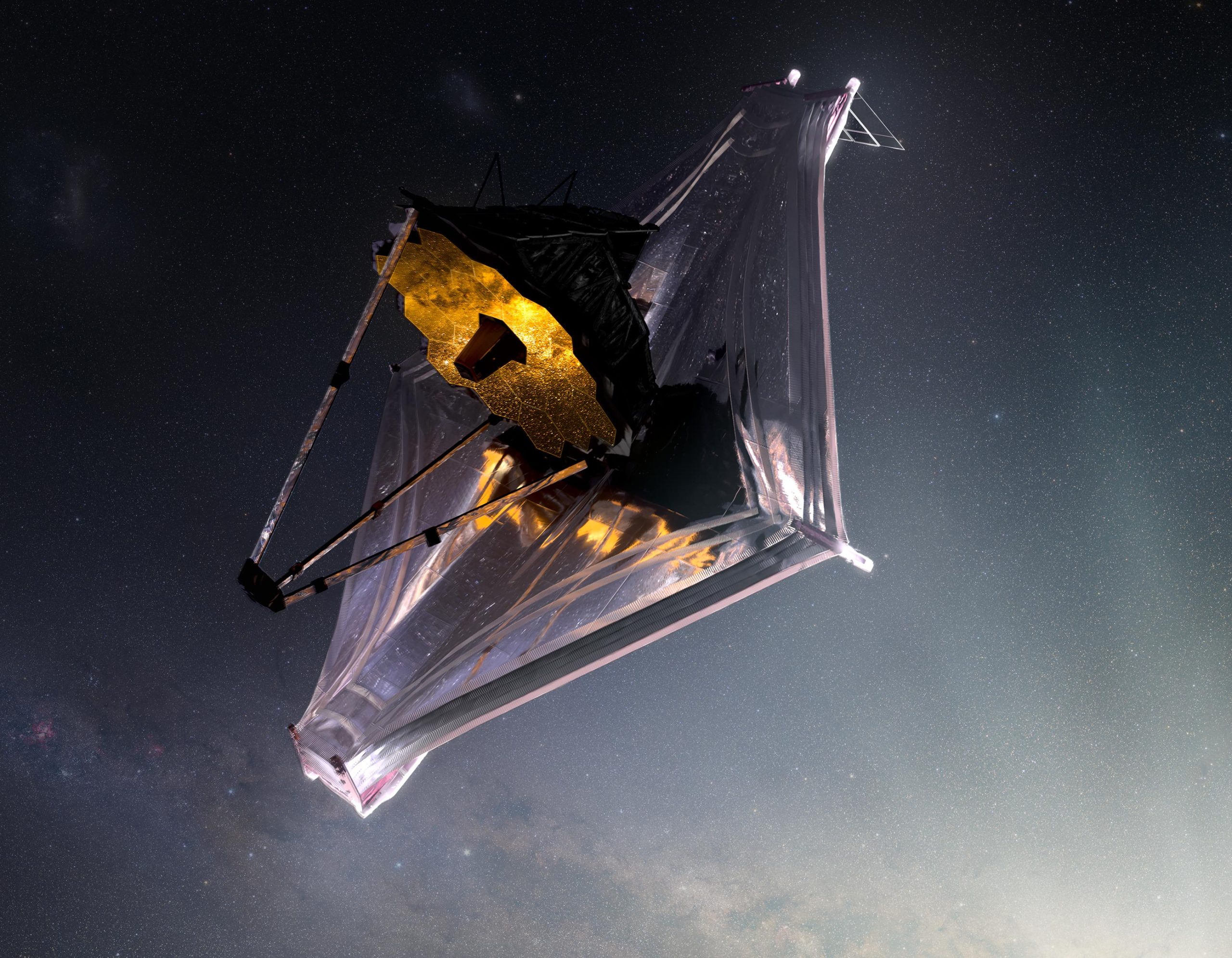
Render artis dari Teleskop Luar Angkasa James Webb. Kredit: NASA GSFC/CIL/Adriana Manrique Gutierrez
Tim Teleskop Luar Angkasa Webb tetap bekerja pada saya komisioning Ini adalah langkah terakhir sebelum dimulainya operasi ilmiah di musim panas. Kami baru-baru ini melihat foto yang menakjubkan dari Lubang hitam di pusat galaksi Bima Sakti kitadiambil oleh teleskop cakrawala peristiwa. Salah satu misteri astronomi modern adalah seberapa besar masing-masingnya galaksi Dia datang untuk memiliki sentralitas raksasa Lubang hitamdan bagaimana beberapa lubang hitam ini sangat besar bahkan di masa awal alam semesta. Kami meminta Roberto Maiolino, anggota tim Near Infrared Spectrometer (NIRSpec) Webb, untuk memberi tahu kami bagaimana Webb akan membantu menjawab beberapa pertanyaan ini.
“Salah satu bidang penemuan paling menarik yang akan dibuka Webb adalah pencarian lubang hitam purba di alam semesta awal. Ini adalah benih lubang hitam paling masif yang ditemukan para astronom di inti galaksi. Sebagian besar galaksi (mungkin semua ) menampung lubang hitam di pusatnya, dan massanya berkisar antara jutaan hingga miliaran kali massa Matahari kita, lubang hitam supermasif ini telah tumbuh menjadi sangat besar dengan melahap materi di sekitarnya dan juga dengan menggabungkan lubang hitam yang lebih kecil.
“Penemuan menarik terbaru adalah penemuan lubang hitam supermasif, dengan massa beberapa miliar massa matahari, yang benar-benar ada ketika alam semesta baru berusia sekitar 700 juta tahun, sebagian kecil dari usianya saat ini yang 13,8 miliar tahun. Ini adalah teka-teki yang membingungkan. hasilnya, karena pada usia dini seperti itu tidak ada cukup waktu untuk pengembangan lubang hitam besar seperti itu, menurut teori standar. Beberapa skenario telah diusulkan untuk memecahkan misteri ini.
Salah satu kemungkinannya adalah lubang hitam, yang disebabkan oleh kematian bintang generasi pertama di alam semesta awal, mengumpulkan materi dengan kecepatan yang sangat tinggi. Skenario lain adalah awan gas primordial, yang belum diperkaya dengan unsur-unsur kimia yang lebih berat dari helium, dapat langsung runtuh membentuk[{” attribute=””>black hole with a mass of a few hundred thousand solar masses, and subsequently accrete matter to evolve into the hyper-massive black holes observed at later epochs. Finally, dense, nuclear star clusters at the centers of baby galaxies may have produced intermediate mass black hole seeds, via stellar collisions or merging of stellar-mass black holes, and then become much more massive via accretion.

This illustration shows the populations of known black holes (large black dots) and the candidate black hole progenitors in the early universe (shaded regions). Credit: Roberto Maiolino, University of Cambridge
“Webb is about to open a completely new discovery space in this area. It is possible that the first black hole seeds originally formed in the ‘baby universe,’ within just a few million years after the big bang. Webb is the perfect ‘time machine’ to learn about these primeval objects. Its exceptional sensitivity makes Webb capable of detecting extremely distant galaxies, and because of the time required for the light emitted by the galaxies to travel to us, we will see them as they were in the remote past.
“Webb’s NIRSpec instrument is particularly well suited to identify primeval black hole seeds. My colleagues in the NIRSpec Instrument Science Team and I will be searching for their signatures during ‘active’ phases, when they are voraciously gobbling matter and growing rapidly. In these phases the material surrounding them becomes extremely hot and luminous and ionizes the atoms in their surroundings and in their host galaxies.
“NIRSpec will disperse the light from these systems into spectra, or ‘rainbows.’ The rainbow of active black hole seeds will be characterised by specific ‘fingerprints,’ features of highly ionized atoms. NIRSpec will also measure the velocity of the gas orbiting in the vicinity of these primeval black holes. Smaller black holes will be characterized by lower orbital velocities. Black hole seeds formed in pristine clouds will be identified by the absence of features associated with any element heavier than helium.
“I look forward to using Webb’s unprecedented capabilities to search for these black hole progenitors, with the ultimate goal of understanding their nature and origin. The early universe and the realm of black holes seeds is a completely uncharted territory that my colleagues and I are very excited to explore with Webb.”
— Roberto Maiolino, professor of experimental astrophysics and director of the Kavli Institute for Cosmology, University of Cambridge
Written by:
- Jonathan Gardner, Webb deputy senior project scientist, NASA’s Goddard Space Flight Center
- Stefanie Milam, Webb deputy project scientist for planetary science, NASA’s Goddard Space Flight Center

“Spesialis budaya pop. Ahli makanan yang setia. Praktisi musik yang ramah. Penggemar twitter yang bangga. Penggila media sosial. Kutu buku bepergian.”

/s3/static.nrc.nl/images/stripped/2407spobadminton.jpg)





More Stories
Mengkompensasi tidur di akhir pekan dapat mengurangi risiko penyakit jantung hingga seperlimanya – studi | Penyakit jantung
Seekor sapi laut prasejarah dimakan oleh buaya dan hiu, menurut fosil
Administrasi Penerbangan Federal meminta penyelidikan atas kegagalan pendaratan roket Falcon 9 SpaceX